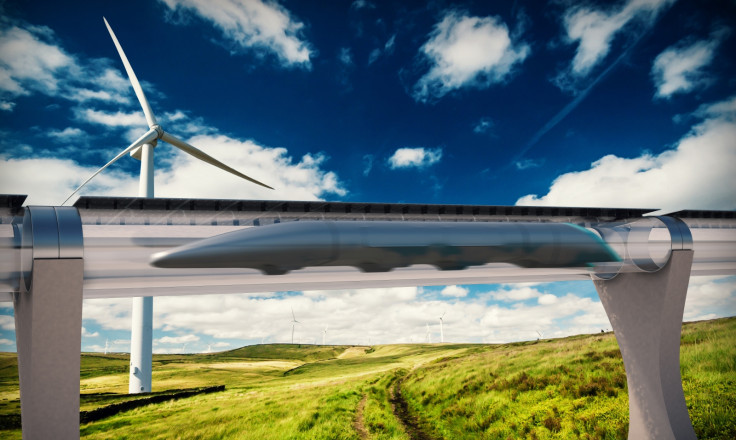Hyperloop: Elon Musk's supersonic 760mph train explained
In the middle of the Nevada desert, on the outskirts of Las Vegas, a potentially revolutionary method of transportationis being tested.This is Hyperloop, a proposed supersonic train put forward by inventor/entrepreneur Elon Musk, the founder of online payments service Paypal, electric car company Tesla and aerospace manufacturer SpaceX.
But what exactly is Hyperloop, and how realistic is it as mode of transport? In this video, IBTimes UK explains.
How does Hyperloop work?
Hyperloop was first revealed by a white paper written by Musk in 2013, who said that he didn't have time to work on the system himself. Instead, it was left an open source design, with anyone free to use and modify it.
Using a vacuum tube with almost all air removed, capsules carrying passengers or cargo would be pushed along by a series of electromagnets. The almost complete lack of friction due to low air pressure means the train could travel at speeds of over 800mph, and 760mph with passengers on board.

Effectively, this would mean that a proposed Hyperloop system between Los Angeles to San Francisco would take only 30 minutes and a rail system between London and Edinburgh would take a similar time.
Rob Lloyd, the CEO of Hyperloop Transportation Technologies, one of the two Los Angeles-based startups working towards making the innovative system a reality, said that one of the main advantages of Hyperloop is that it requires very little energy.
"We actually only need propulsion for about 5% of the track. So we get you up to speed, could be 750 mph, and then we can glide for 100 miles without applying any other energy because we have little friction," he said.

How realistic is it?
Elon Musk has called Hyperloop the future of inter-city transport. But the technology is unproven and doubts remain over whether Hyperloop is realistic. Previous vacuum trains, such as the 19th century Crystal Palace pneumatic railway, were unsuccessful. The safety of passengers on board a train travelling at such speeds if a mechanical fault or natural disaster such as an earthquake happened, has also be questioned.
Despite these, concerns, plans are well under way for the first Hyperloop track to be tested. Hyperloop Transportation Technologies have filed construction permits in Quay Valley, California for a five-mile track. Quay Valley is a 75,000-resident community which will be solar powered and situated halfway between San Francisco and Los Angeles.
HTT says it will start surveying land close to Quay Valley in the coming few weeks over February and March, with construction set to begin in the middle of 2016. The company says a passenger service will be ready to run by 2018.
© Copyright IBTimes 2025. All rights reserved.






















